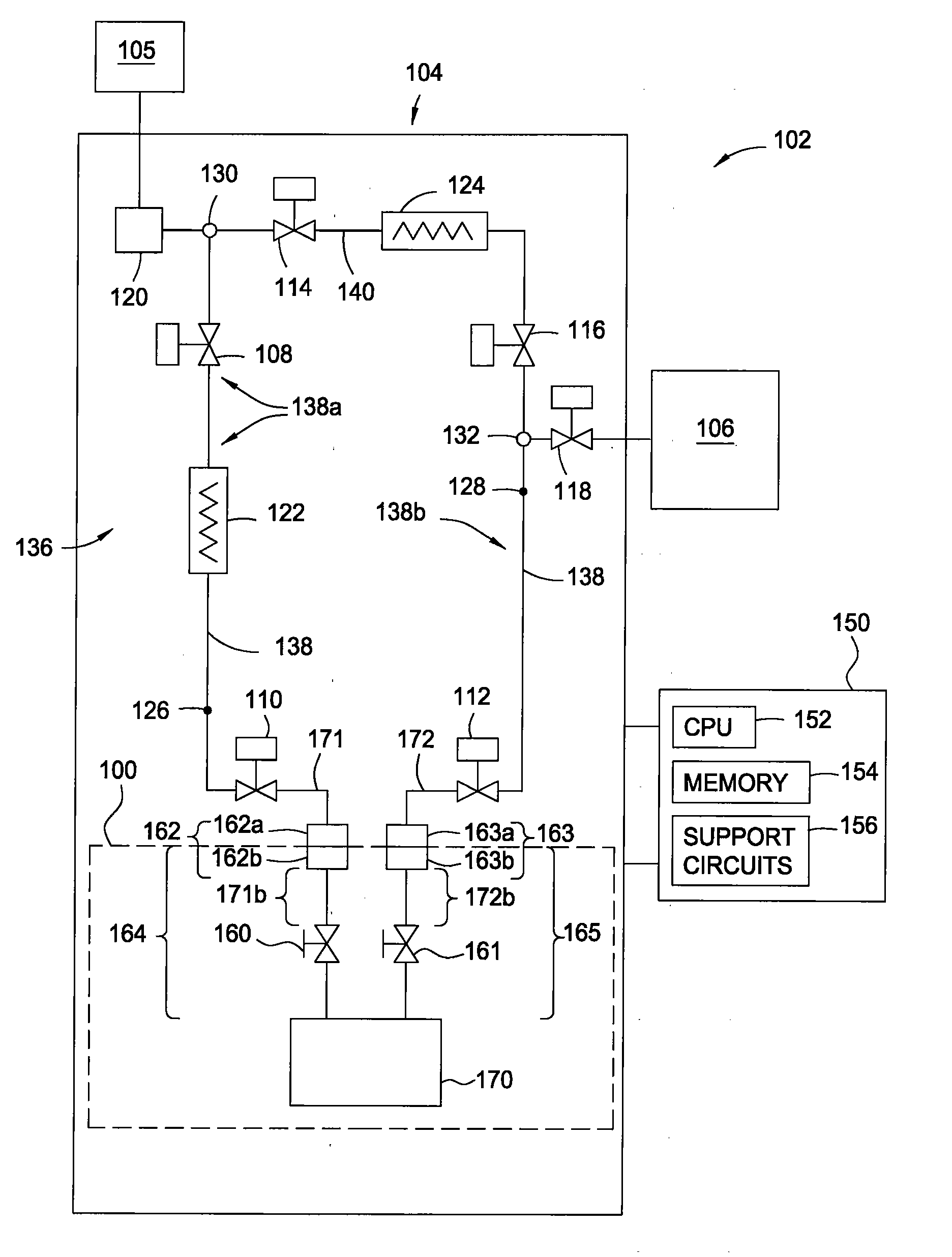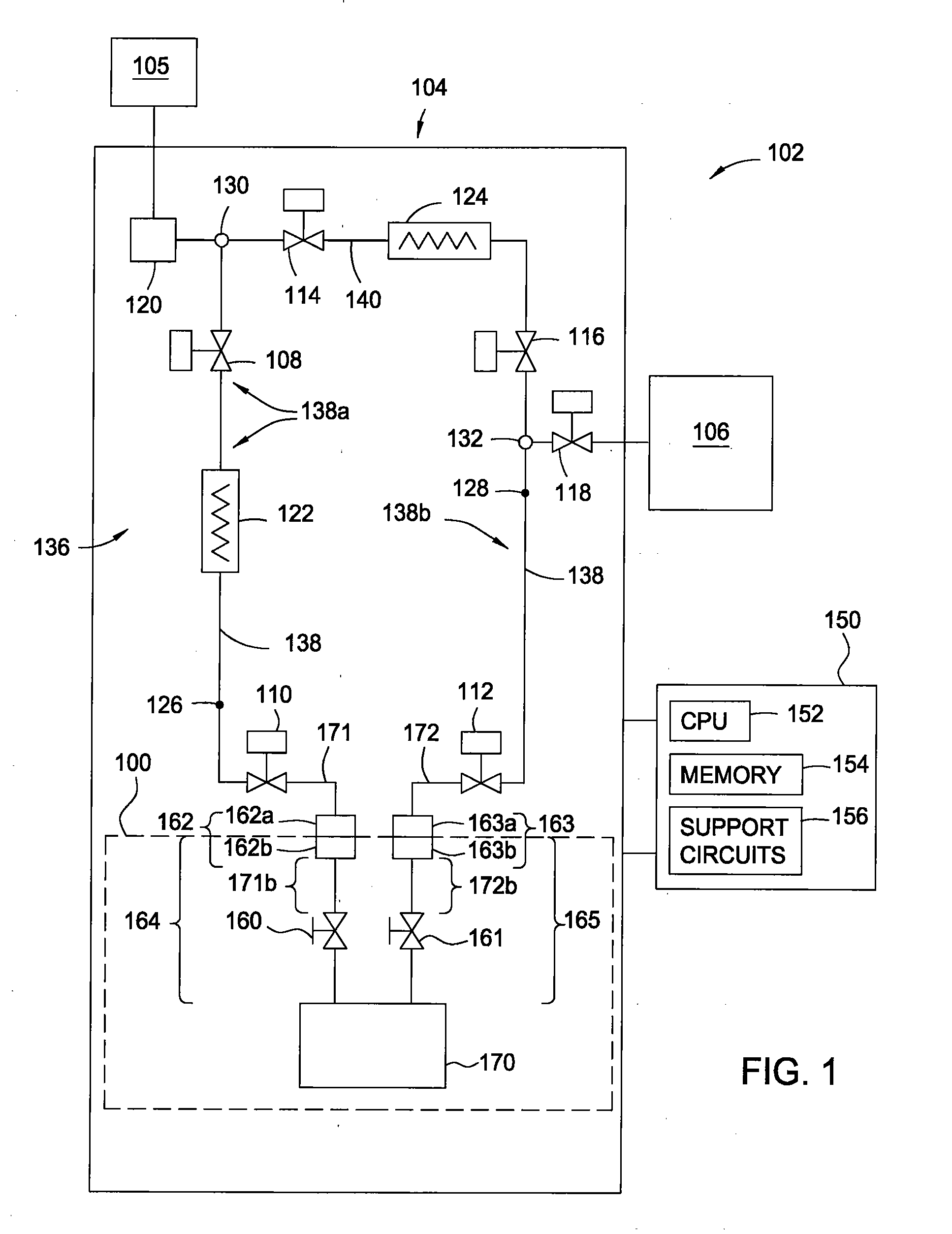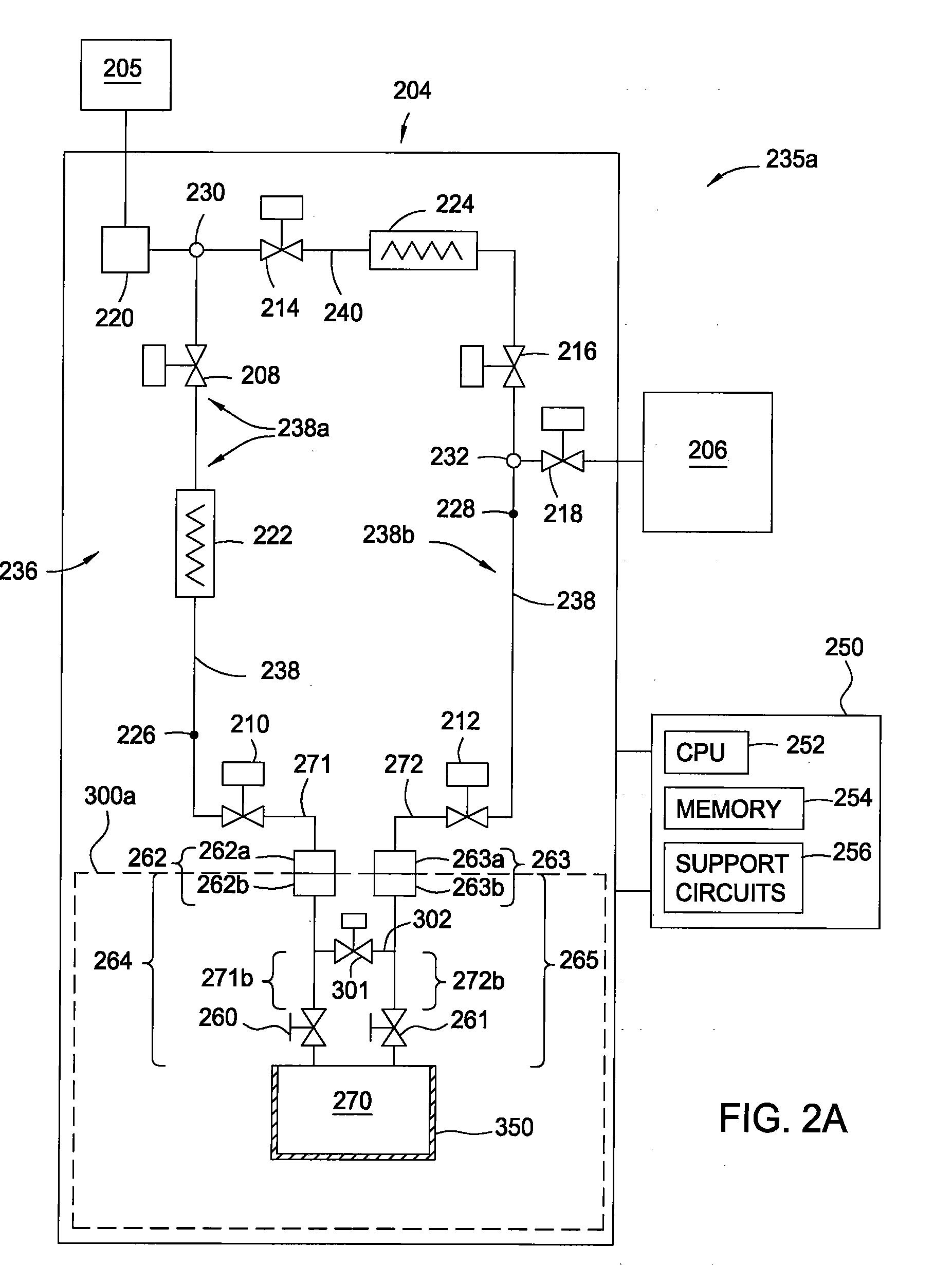Ampoule with a thermally conductive coating
a thermally conductive coating and ampoule technology, applied in the field of ampoule, can solve the problems of affecting the uniformity of temperature of vapor deposition process, limited type and composition of layers that may be formed using cvd process or ald process, and complex devices of integrated circuits, etc., to achieve the effect of improving the uniformity of temperatur
- Summary
- Abstract
- Description
- Claims
- Application Information
AI Technical Summary
Benefits of technology
Problems solved by technology
Method used
Image
Examples
Embodiment Construction
[0031]FIG. 1 is a simplified schematic of process gas delivery system 102 which suitable for producing a process gas containing a chemical precursor and generally includes process chamber 106 and a carrier gas source 105 coupled to gas panel 104, the components of the latter being controlled by a controller 150. Gas panel 104 generally controls the rate and pressure at which various process and carrier gases are delivered to process chamber 106. Process chamber 106 may be a chamber to conduct vapor deposition processes or thermal processes containing a vaporized chemical precursor in liquid, gaseous or plasma state. Process chamber 106 is generally a chemical vapor deposition (CVD) chamber, an atomic layer deposition (ALD) chamber, or a derivative thereof. Examples of process chamber 106 include a PRODUCER® CVD chamber and a DZX® CVD chamber, both available from Applied Materials, Inc., located in Santa Clara, Calif., or an ALD chamber, such as that described in commonly assigned U....
PUM
| Property | Measurement | Unit |
|---|---|---|
| Volume | aaaaa | aaaaa |
| Adhesion strength | aaaaa | aaaaa |
| Electrical conductor | aaaaa | aaaaa |
Abstract
Description
Claims
Application Information
 Login to View More
Login to View More - R&D
- Intellectual Property
- Life Sciences
- Materials
- Tech Scout
- Unparalleled Data Quality
- Higher Quality Content
- 60% Fewer Hallucinations
Browse by: Latest US Patents, China's latest patents, Technical Efficacy Thesaurus, Application Domain, Technology Topic, Popular Technical Reports.
© 2025 PatSnap. All rights reserved.Legal|Privacy policy|Modern Slavery Act Transparency Statement|Sitemap|About US| Contact US: help@patsnap.com



